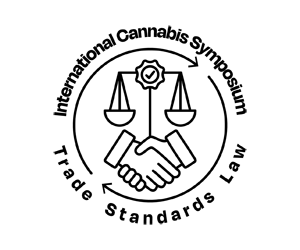Matt Zorn Update from On Drugs posted 1 July 2024
Onto the appeal
Today, in a 15-page opinion, the district court in the Canna Provisions case—i.e., the “Boies case”—dismissed the complaint. The court correctly concluded (1) that it could not overrule the 2005 Supreme Court case Gonzales v. Raich, and (2) summarily dismissed the notion cultivating, processing, and distributing marijuana is a fundamental right like the right to marry.
As the court explains:
Almost twenty years ago, the Supreme Court [in Gonzalez v. Raich] declined to find that the reach of the Controlled Substances Act, 21 U.S.C. § 801et seq., exceeded the bounds of federal authority when applied to noncommercial, wholly-intrastate activities involving small-scale cultivation and possession of marijuana for personal medical use. …
Plaintiffs, four owners of marijuana businesses that operate in Massachusetts and incompliance with state law, have asked this court to reach a different conclusion about the limits the Commerce Clause imposes on Congressional authority. Plaintiffs support their position by detailing the extent of changed views about marijuana, state regulation, and federal enforcement since the Supreme Court decided Raich.
That the district court did not overrule on-point United States Supreme Court precedent was expected and is no knock on Plaintiffs, their lawyers, or the lawsuit’s proponents. The decision is neither a win nor a loss.¹ Quite clearly, it’s step one in a longer term plan. Because the issue was taken up on a motion to dismiss, the Court didn’t even make factual findings. Rather, as trial courts must do, the court assumed the complaint’s allegations to be true. The court then concluded that Plaintiffs correctly didn’t state a claim even assuming those allegations to be true, because it could not overrule the Supreme Court’s decision in Gonzalez v. Raich.
This decision does not mark the end of the case. Indeed, it’s the beginning. Almost certainly, Plaintiffs will appeal. Just as certain, the United States First Circuit Court of Appeals will reach the same conclusion as the district court did. It cannot overrule Raich; only the Supreme Court can. So, there will be a petition to the Supreme Court.
This has always been a Supreme Court play. And that means it has always faced long odds. The average chances of “getting cert” — i.e., to get the Supreme Court to review a lower court ruling — fluctuates around 1-3%. To be clear, that’s an average that includes both low-quality cases (e.g., pro se cases) and high quality cases (e.g., those with Circuit splits or where the court of appeals reach different outcomes). Based on what I’ve read, attorney submitted petitions typically have chances around 6%. Obviously, Canna Provisions has better odds than a pro se petition. But in my opinion, it doesn’t sport any plus factors like a circuit split or an issue of tremendous national importance, in view of DOJ non-enforcement and impending rescheduling.² I’d therefore peg the odds to be greater than 3%, but still not good.
It’s hardly a secret that I’ve never been a fan of this case and the legal theory it behind it for several reasons (see footnote 2), which reasons bear repeating. It isn’t just the long odds.
First—and my biggest issue with the cases—is that there’s never been a successful as-applied Commerce Clause challenge. The three recent successes—Lopez, Morrison, and the NFIB (Obamacare)—were all facial challenges. In contrast, Raich, was an as-applied challenge. So is Canna Provisions.
Explaining in detail the difference between an as-applied and facial challenge is beyond the scope of this note. As I stated in footnote 2 of this essay:
In the former, a plaintiff challenges a statute or law as unconstitutional—always. In the latter, a plaintiff admits that a statute or law may sometimes be unconstitutional, just not as applied to that plaintiff or its conduct. The Supreme Court has deemed statutes facially unconstitutional as exceeding authority under the Commerce Clause, but it has never struck a statute down on those grounds as-applied. The current challenge is an as-applied Commerce Clause challenge (never succeeded), not a facial challenge (sometimes succeeds).
But if you are genuinely interested in the lawsuit’s chances of success, understanding the difference is critical and ably explained in this brilliant 2010 law review article by Nicholas Rosenkranz at pages 1273 to 1279. Suffice to say, the article persuasively argues that a Commerce Clause challenge is inherently facial.³
Second, it isn’t clear precisely what Plaintiffs walk away with even if they succeed. Perhaps Plaintiffs get an injunction granting and some kind of an as-applied exception to CSA enforcement against intrastate operations. That wouldn’t reschedule or deschedule cannabis but would only carve out certain local activities from criminal prosecution. What does that practically do? Even if the federal government cannot prosecute intrastate production, distribution, and use—it already does not—it could still regulate and schedule cannabis under the CSA as a scheduled controlled substance. As a result, the bane of the industry’s existence, 280E, would remain a problem as that statute applies to trafficking in a Schedule I or II substances. An intrastate carve out wouldn’t change that.⁴ And, would NASDAQ really be comfortable listing marijuana companies based on an injunction that exempts intrastate use as-applied? Unlikely, but possible I suppose.
Third, beyond long odds, there’s a long timeline. From here, it will likely take a year to trudge through the First Circuit. After that, another year—maybe two—to get to the Supreme Court on cert, brief the merits, and argue the case. Then, even with a win at the Supreme Court, it isn’t over. A Supreme Court win would result in a remand and sending the case back down to the trial court where it will take more time to resolve the case. That’s a minor procedural detail, but it’s an important one.
In particular, my read of the district court’s opinion is that its ruling on standing isn’t final. Rather, the court assumed the complaint’s allegations to be true, as it must do on a motion to dismiss. Consider the following paragraph from the opinion:
When credited, Plaintiffs’ detailed allegations about their financial injuries meet that burden. Though individual decisions by specific third parties are the final link in the causal chain, the economic injury actually flows from the multitude of similar decisions made by many third parties, all responding to the CSA. In the aggregate, the decisions have caused a predictable “downstream injury to plaintiffs” by dramatically reducing their options for obtaining business services compared to the options available to non-marijuana businesses. Id. Though the third-party decisions are not directly compelled by the CSA, they are all foreseeable responses to the risks and uncertainties the CSA imposes on transactions with state-regulated marijuana businesses and, together, they inflict a common injury on Plaintiffs. See id. at 1557-58. For these reasons, the court finds the Plaintiffs’ economic injuries provide an additional basis for standing
At summary judgment, the court could decide differently. On the motion to dismiss, the district court assumed that business service providers refuse to work with state regulated businesses because of CSA criminalization. Early on, a Plaintiff can rely on mere allegations to support standing. But as a case progresses, those allegations must be proven up with facts. And, I’m not so sure that claim will hold up to deeper scrutiny, i.e., whether any of these business would work with Plaintiffs if there were an as-applied exception to the CSA that insulated local marijuana businesses from prosecution under the CSA. On a fuller factual record, other reasons could emerge.⁵
Nonetheless, with all that said, while I’m still not a fan of this lawsuit, the district court’s dismissal of the complaint can hardly be seen as a failure by the lawsuit’s proponents. Quite clearly, they are angling for getting the case in front of the Supreme Court. Nothing about this decision changed those chances favorably or unfavorably.⁶
I wouldn’t read much into the statement that the complaint “alleged persuasive reasons for a reexamination of the way the Controlled Substances Act (‘CSA’) regulates marijuana.” Again, the Court had to credit the complaint’s allegations as true, without regard to counterarguments. Also, many courts have made similar observations in the past decade, such as the Second Circuit in Washington v. Barr, without any legal effect. After all, just because there are persuasive reasons to reexamine the way the CSA regulates marijuana—for example, rescheduling—does not mean it is time for the Supreme Court to overrule Wickard and upend Commerce Clause jurisprudence.
The best way to get good odds on getting a petition granted seems to be getting an elite Supreme Court practitioner to sign the petition, like Paul Clement, who sport rates at 33% or above. I’m guessing that elite practitioners typically attach themselves to higher quality cases. Notably, even Supreme Court pros like Neal Katyal and Seth Waxman have cert grant rates below 25%. An average of Supreme Court pros gives a cert petition rate of around 25%.
I also don’t believe a case involving cannabis business and cash considerations is a high probability way to ask the Supreme Court to overturn decades worth of fundamental Commerce Clause jurisprudence that could have far reaching implications beyond this case. In comparison Loper Bright—the recent case where the Supreme Court discarded Chevron deference—is a case about a family-owned New Jersey fishing company. That case followed decades of advocates incrementally chipping away at Chevron’s underpinnings in numerous other cases so that Loper wasn’t such a huge step. A ruling in favor of the Canna Provisions Plaintiffs would essentially overturn entire regulatory regimes wholesale overnight.
Moreover, Section 280E is a valid exercise of the Taxing Power, a federal power entirely distinct from the Commerce Clause.
While the district court’s opinion cites the Supreme Court’s recent FDA v. Alliance for Hippocratic Medicine decision on standing, it fails to cite the Murthy v. Missouri opinion decided last week. The latter case, involving whether the Plaintiffs had standing to obtain an injunction to prevent government officials from “jawboning” social media companies into censorship, speaks far more directly to the standing issues in Canna Provisions. As the Murthy opinion makes clear, past the motion to dismiss phase, proving standing requires factual support to show standing for each plaintiff and that plaintiffs cannot be treated as a unified whole for each form of relief sought.
Apologies for the extended absence… but I’m back. I’ve been unable to write recently for a variety of reasons, including current matters that overlap with potential topics of discussion. Stay tuned for an essay explaining how Chevron’s demise will affect the drug policy space.




















